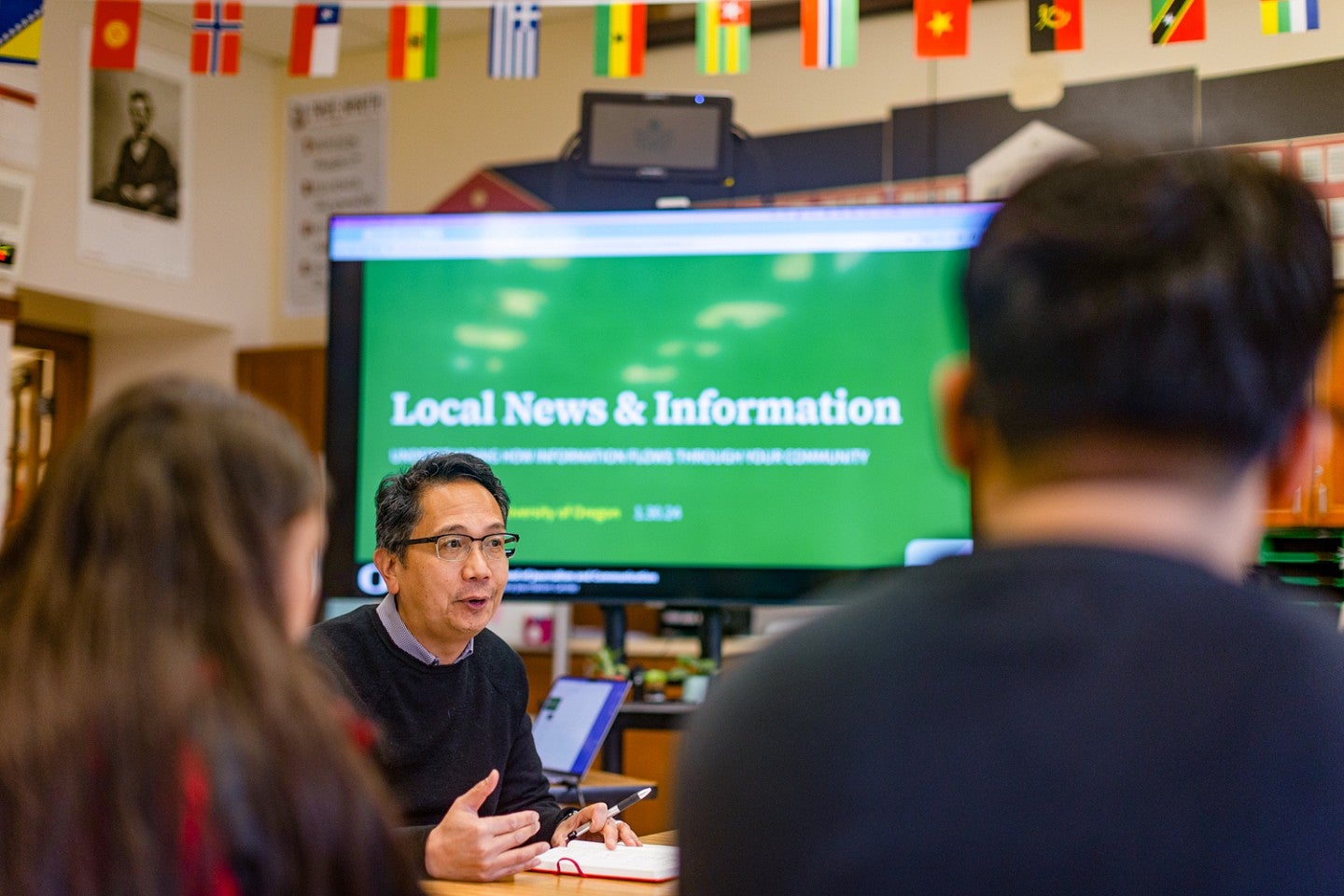
Andrew DeVigal believes that journalists have a superpower they don’t use often enough — listening to their communities. The professor of practice at the UO School of Journalism and Communication (SOJC) says that as journalists get caught up in their daily work, it’s easy to forget about community information needs and the role of journalism in local community cohesion.
“We’re thinking about our deadlines, and we’re trying to listen for a quote that fits the narrative in our head rather than going into a community being wide open about possibilities of what we’re hearing,” said DeVigal, who directs the SOJC’s Agora Journalism Center.
To remedy this issue, DeVigal created the Engaged Journalism class in the SOJC’s journalism major — a course where students are paired with specific communities and conduct a needs assessment to understand how information flows through a community. Through this process, the students identify information gaps and assets, and then write a report at the end of term, outlining survey results and making data-driven recommendations to bolster the local news and information landscape.
Listening to community builds trust in media
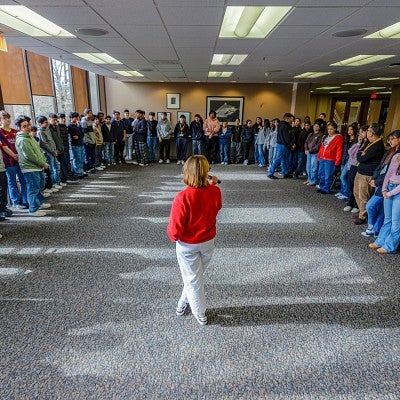
According to a 2022 Gallup poll, only 34% of Americans trust the media to report the news "fully, accurately and fairly." Just 7% of Americans have "a great deal" of trust and confidence in the media, and 27% have "a fair amount."
“One of the things we emphasize in my class is: How do we better listen to community members?” DeVigal said. “How do we better understand their needs? How do we better facilitate conversations between diverse community members to improve community connection? The role of journalists as facilitators is a new skill.”
Journalism major Isabella Albin, who took the class winter term working with SCI’s Sustainable City Year Program and the city of Salem, helped identify information gaps in that community and propose creative solutions. One question the class addressed was how the youth of Salem accessed trusted information that mattered to them. Albin found that a lot of young people rely on social media to get their news, and that gets into a murky area because the quality of information can be hard to verify.
“One of our recommendations was for news organizations to look at social media almost like a digital newsstand,” Albin said. “It's a way to engage younger audiences, and a pro of social media is that it’s free and really accessible.”
As part of the class, Albin traveled to Salem to talk about journalism practices to students at Willamette Academy, a college access program that serves students in grades 8-12 in the Salem-Keizer area. She also canvassed residents about their news habits and used the data in the end-of-term report.
“I worked with a small group of seventh to eighth grade girls, and we went through their day-to-day and how news in Salem played a part in their life, and how they viewed those things,” Albin said. “It was great to see how younger generations engage with local news.”
SOJC is a national leader in community and relational journalism
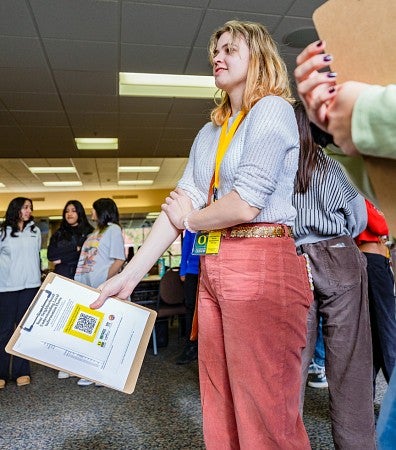
Albin took the class because she wanted to expand her knowledge of journalism practices while getting involved in local news in her community.
“As a young journalist, I think it’s really important to not only take classes where we go over the hard skills of journalism and how to do the job, but also take classes that take a step back [and cover) ethics, morals and different roles of journalism,” Albin said. “The industry is in a precarious situation, especially with print, but (we’re) looking at ways it can be revitalized through journalism that is really impactful and deeply connected to communities.”
The Engaged Journalism class is just one way that the SOJC is a national leader in community journalism and relational journalism — approaches that attempt to repair public trust in the media and rebuild community relationships.
“So often, people’s relationships with journalists are only when you want a story,” said SOJC Professor of Practice Damian Radcliffe, Carolyn S. Chambers Professor of Journalism. “It’s like, I want a quote, I need a fact, I want this, and then I get this from you. I extract that and then I disappear, and you never hear from me again, until the next time I’m on deadline and I need something. That dynamic is not a good way to build sources and relationships, and it’s a surefire way to piss people off because it feels so transactional.”
Community-centered journalism focuses on relationship building
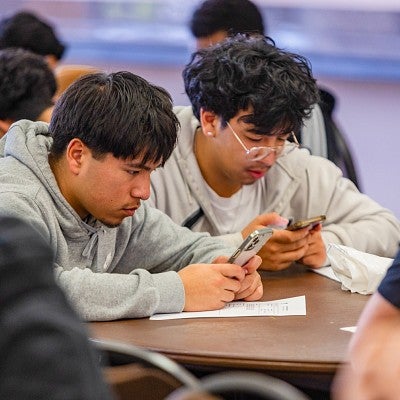
Instead, relational engagement focuses on community-centered journalism, stepping away from previous models of journalism that were more transactional and focusing instead on building trusted relationships within a community. This has been a big focus in Radcliffe’s work, inspiring his current research on advancing community-centered journalism.
“So much of the distrust stems from the way in which people have been treated,” Radcliffe said. “They don't feel seen, they don't feel heard, they don't trust the media. The reason they don't trust the media is because they don't understand the processes that are going on to create the end product. So taking time to invest in that can also help to rebuild trust.”
That time investment often doesn’t match the economic and journalistic pressures of news organizations.
“To rebuild that trust, we need to operate on timelines that accommodate the community we serve,” DeVigal said.
The Agora Journalism Center, which DeVigal directs, is described as the “forum for the future of local news and engagement.”
“We wanted to rethink journalism, civic engagement and the role of journalists to create and hold space, to bring community members together so that they can present new information while we listen and tell the stories of the community collectively,” DeVigal said. “That’s why the center is named after the gathering place of ancient Greece. Our center is that 21st century agora — a space for people to deliberate, identify solutions from the community to resolve and take on some of the challenges that the community is facing.”
Analyzing coverage gaps is key to creating sustainable models
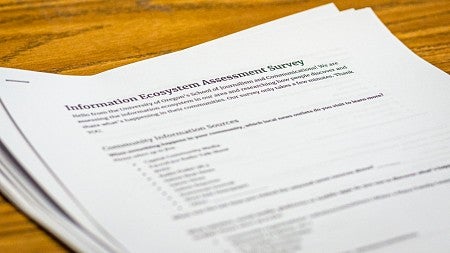
A plethora of research has shown that local news coverage gaps — also known as news deserts — are increasing across the country, leading to a lack of community cohesion and accountability for those in power. To better understand Oregon’s landscape, in 2022 the Agora Journalism Center researched and published the Oregon Local News and Information Ecosystem report, mapping the state’s local news organizations and tracking further contraction or growth over time.
“The current state of local news is often a story of decline — highlighting dwindling resources, decreasing readership and the ongoing struggle against misinformation,” DeVigal said. “We can also tell the story of resilience, collaboration and untapped potential within Oregon's local news and information ecosystem.”
One of the Agora Journalism Center’s primary missions is to support local news ecosystems across Oregon. For DeVigal, this includes expanding his Engaged Journalism class to specifically serve local communities, assess their news and information landscape, identify civic information partners to fill gaps and create sustainable business models for media organizations.
“The role of training journalists of tomorrow, and even of today, is critical,” DeVigal said. “Time-tested processes, such as investigative reporting and fact-checking, remain crucial in today’s journalism. And the skills the SOJC teaches in community listening, media collaboration and entrepreneurial approaches can lead to that untapped potential to bolster and sustain a healthy information ecosystem that serves all Oregon communities.”
—Ella Norton, public relations ’24
Ella Norton (she/her/hers) is the executive print editor for Align magazine, an account supervisor for Allen Hall Public Relations and an ambassador for the SOJC.
